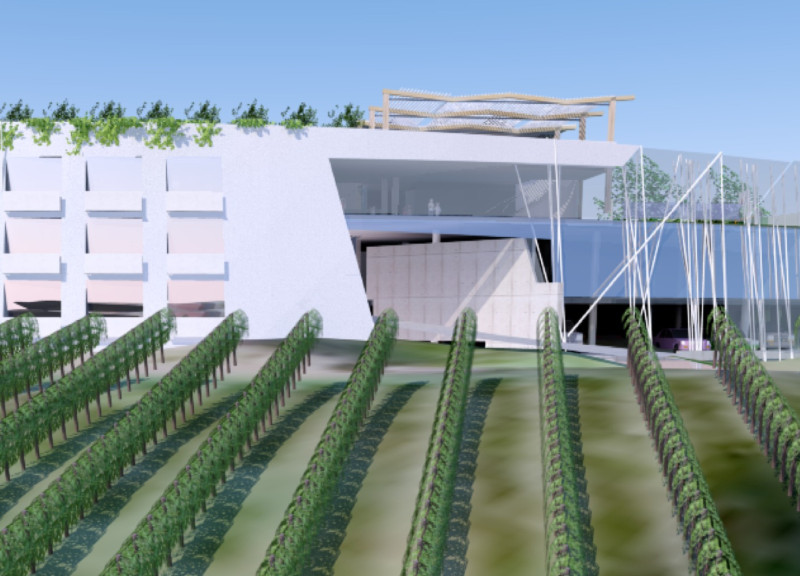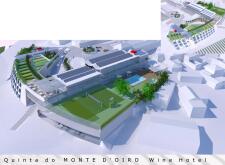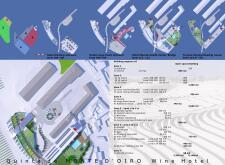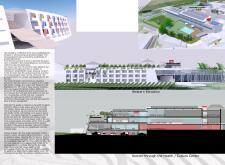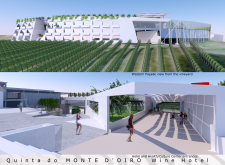5 key facts about this project
Spatial Organization and Functionality
The hotel is organized into distinct yet interconnected areas that accommodate various functions. Guest rooms range in size, offering diverse options for visitors, while a health and cultural center encompasses amenities such as a spa and meeting spaces. These facilities not only enhance the guest experience but also provide areas for relaxation and social interaction. Event spaces designed for gatherings reinforce the hotel’s role as a community hub, encouraging cultural exchanges and local festivities.
The architectural design facilitates a flow between indoor and outdoor spaces, fostering a connection to the natural environment. Use of terraces and gardens allows guests to experience the vineyard atmosphere directly from their accommodations, promoting a seamless relationship with the landscape.
Innovative Architectural Approaches
One of the unique aspects of the Quinta do Monte d'Oiro Wine Hotel is its integration of organic design with modern architectural techniques. The form of the building reflects the undulating nature of vineyard rows and local topography, creating a cohesive architectural expression linked directly to the land. The façade includes large glass panels that optimize natural light while framing stunning vineyard views, enhancing guests' sensory experiences.
Material selection is fundamental to the project’s character. The predominant use of concrete provides structural integrity, while wood accents introduce warmth and a natural appeal. Metal screens are employed strategically to ensure thermal comfort and aesthetic variation, while also addressing practical needs such as sun control and privacy. This thoughtful consideration of materials highlights the project's commitment to sustainability within a modern context.
Community Engagement and Cultural Significance
The Quinta do Monte d'Oiro Wine Hotel positions itself as more than a place to stay; it functions as a cultural venue that promotes local artisans and traditions. By featuring spaces for events and activities related to the wine culture, the hotel creates opportunities for guests to engage with local customs and practices. This design philosophy supports community identity while contributing positively to the regional tourism landscape.
To gain deeper insights into this architectural project, including its plans, sections, and design concepts, readers are encouraged to explore the detailed project presentation. The architectural plans and sections provide further context on the design methodology and spatial relationships that define this unique wine hotel.


